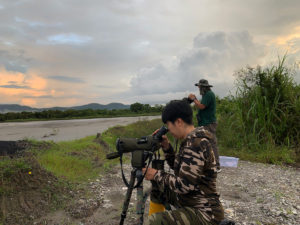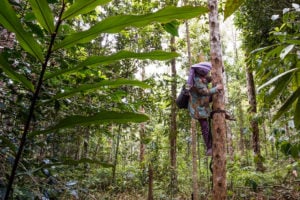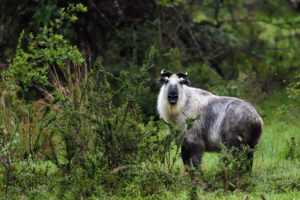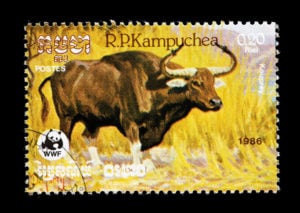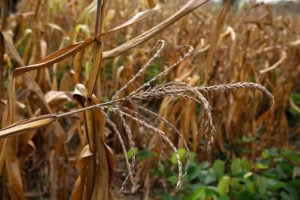Two pairs of gangly white legs propping up a narrow, dark body with a humped back, drooping dewlap and curved horns are the tell-tale features of Cambodia’s national mammal, the kouprey.
Once found in the grasslands and open forests of northern Cambodia and southernmost Laos, the near-mythical wild cattle species has not been definitively sighted for more than half a century. The International Union for Conservation of Nature (IUCN) – the world’s foremost authority on species’ threatened status – says the kouprey is “most likely to be extinct” in its assessment. But a combination of local politics and data deficiencies have kept an official designation of extinction at bay.
Researchers at conservation organisation re:Wild and the Leibniz Institute for Zoo and Wildlife Research are now conducting the first kouprey-specific study in more than a decade. The research team is attempting to identify unsurveyed potential kouprey habitat in the hopes of contributing an “evidence-based piece to the kouprey puzzle”, says Andrew Tilker, the Asian species officer for re:Wild, who is spearheading the study.
“Until we have resolved whether or not the kouprey could still be out there with a certain level of confidence, that question mark will continue hanging over this species,” says Tilker.
The world’s most elusive wild cattle
The kouprey’s image is not hard to find in Cambodia. The kouprey statues along the driveway of Cambodia’s national zoo, and on roundabouts at Phnom Penh’s historic Wat Phnom pagoda and in Senmonorom town are hard to miss.

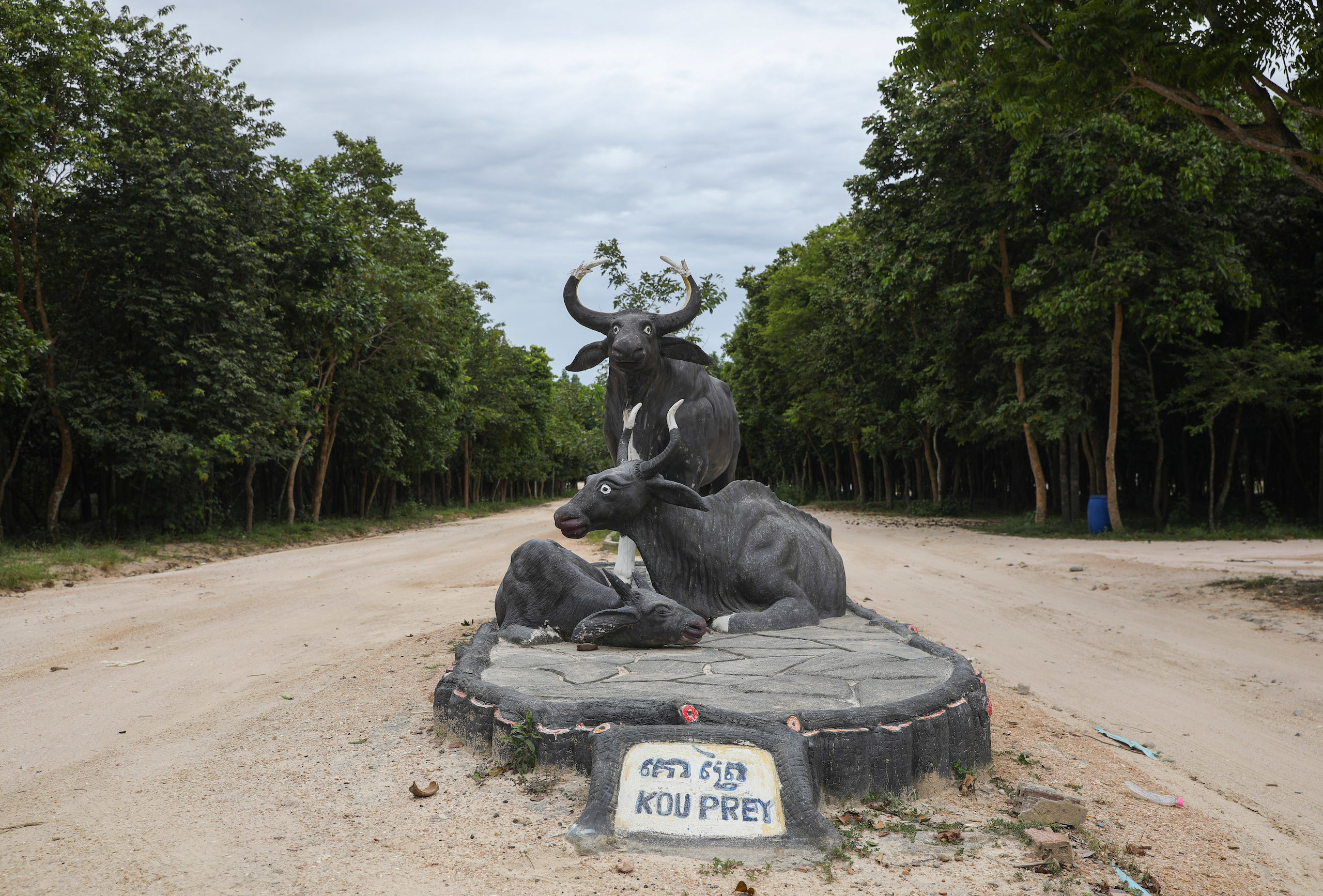
The kouprey was only scientifically described in 1937. What little is known of its biology comes mostly from expeditions in Cambodia undertaken in the 1950s and early 1960s. These found that the kouprey naturally existed at low densities. Researchers attribute the decline of wild populations to high levels of hunting in the region. While kouprey sightings were claimed in the 1980s, the last confirmed kouprey sighting was in 1969 in northern Cambodia.
In 2011, the IUCN’s Asian Wild Cattle Specialist Group assessed approximately 90% of the region’s camera trap photos, some taken in what was believed to be the kouprey’s range, and found no images of the animal.
The first phase of Tilker’s kouprey study, which is already underway, consists of combing through data from historical expedition surveys to piece together a more accurate picture of where the kouprey once lived. The second part, which has mostly been completed, involves collecting camera trap records from across Indochina to analyse which landscapes have been searched and to what degree. The final phase will combine this information to see if there are any areas of plausible kouprey habitat that have not been extensively surveyed.
Not knowing what is in a protected area leaves conservationists unable to design actions and interventionsPablo Sinovas, country director for Fauna & Flora International in Cambodia
The team expect to complete the study in 2023. What happens after that will depend on the results, Tilker says. “If there are areas that merit further [field] searches, I am sure we could move ahead because there is enough interest in the global conservation community.”
While the kouprey was historically been recorded in open forests and grasslands, Tilker argues that with so little known of its biology, other habitat types could conceivably support the species.
“Very remote, densely forested areas are the last stronghold for many large mammal species that are subject to heavy levels of exploitation,” Tilker says. Asked where kouprey could most credibly be clinging on in Indochina, Tilker points to the Cambodia–Laos border, where he says large areas of forest have never been surveyed because of their remoteness.
The best example, he says, is Virachey National Park, which stretches across more than 332,000 hectares along Cambodia’s border with Laos and Vietnam. Scientific knowledge on what lives in the park is limited. The area’s first comprehensive biodiversity survey is in the process of being conducted.
In March 2021, camera traps set in the first stages of the biodiversity survey, led by the NGO Fauna & Flora International, captured the first ever images of a large-antlered muntjac fawn in Cambodia. The species was only scientifically described in 1994 and it is listed as “critically endangered” by the IUCN. The photos demonstrated the presence of a breeding population in Cambodia.
According to Pablo Sinovas, country director for Fauna & Flora in Cambodia, “The very significant find means there is probably a lot more to be found in the area.” Not knowing what is in a protected area like Virachey leaves conservationists unable to design conservation actions and interventions for the rare and endangered species that do live there, he says.

As Fauna & Flora’s flagship species officer in Cambodia, Chantha Nasak has spent weeks in Virachey setting camera traps for the biodiversity study. He hopes the results will emphasise the need to protect large mammal habitat.
“Wildlife is a very special part of Virachey and the kouprey is a very special part of Cambodian culture. Unfortunately, now the population of kouprey in Cambodia is unknown,” he says. “But we should focus on protecting places, like Virachey, so maybe kouprey but definitely other special animals can survive.”
Southeast Asia’s snaring crisis
Alongside the kouprey, several other members of the cattle family are native to Indochina, including the banteng, gaur and wild water buffalo. All are now facing serious declines, driven largely by indiscriminate snaring, leading conservationists to fear they will go the way of the kouprey.
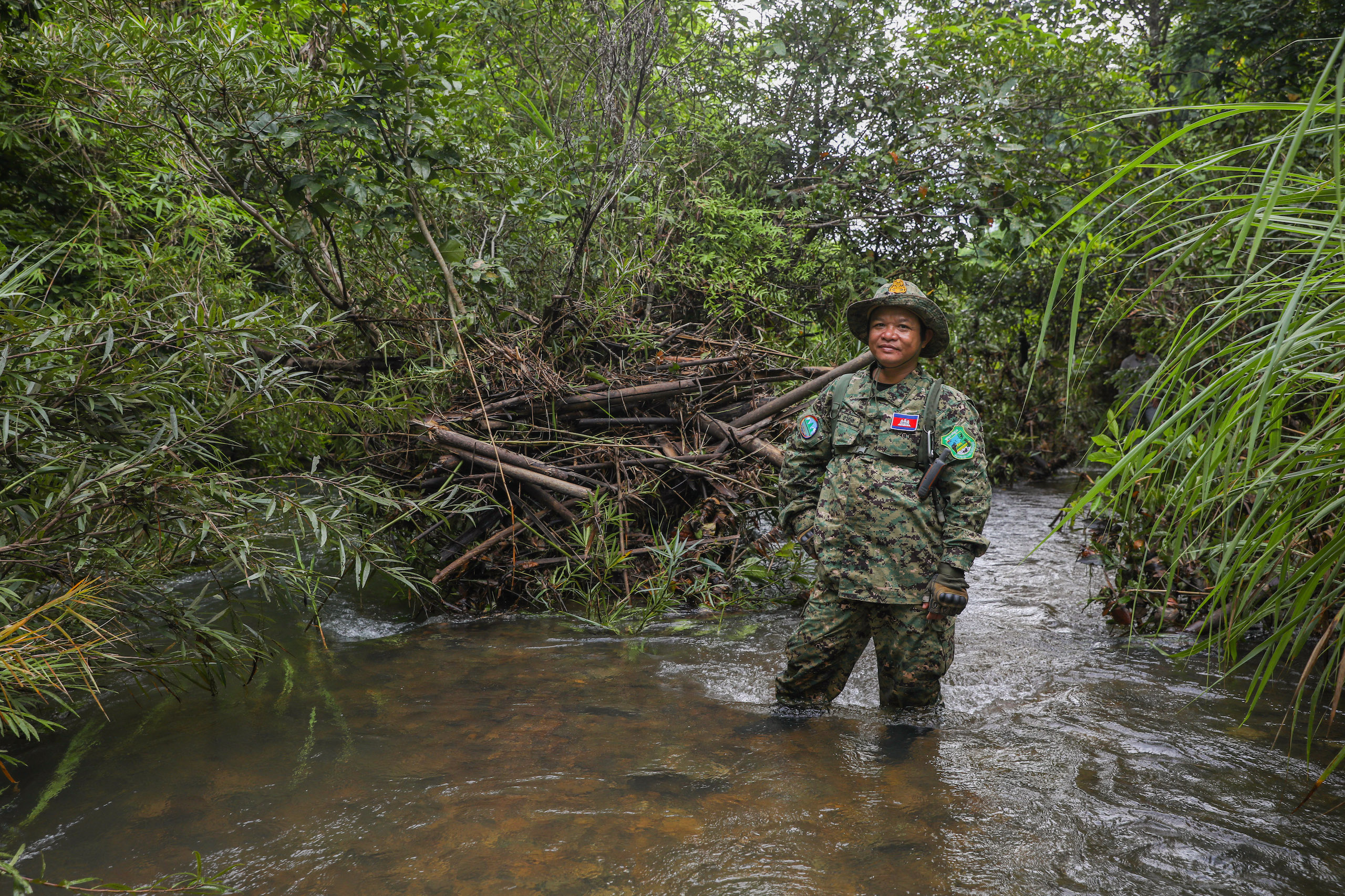
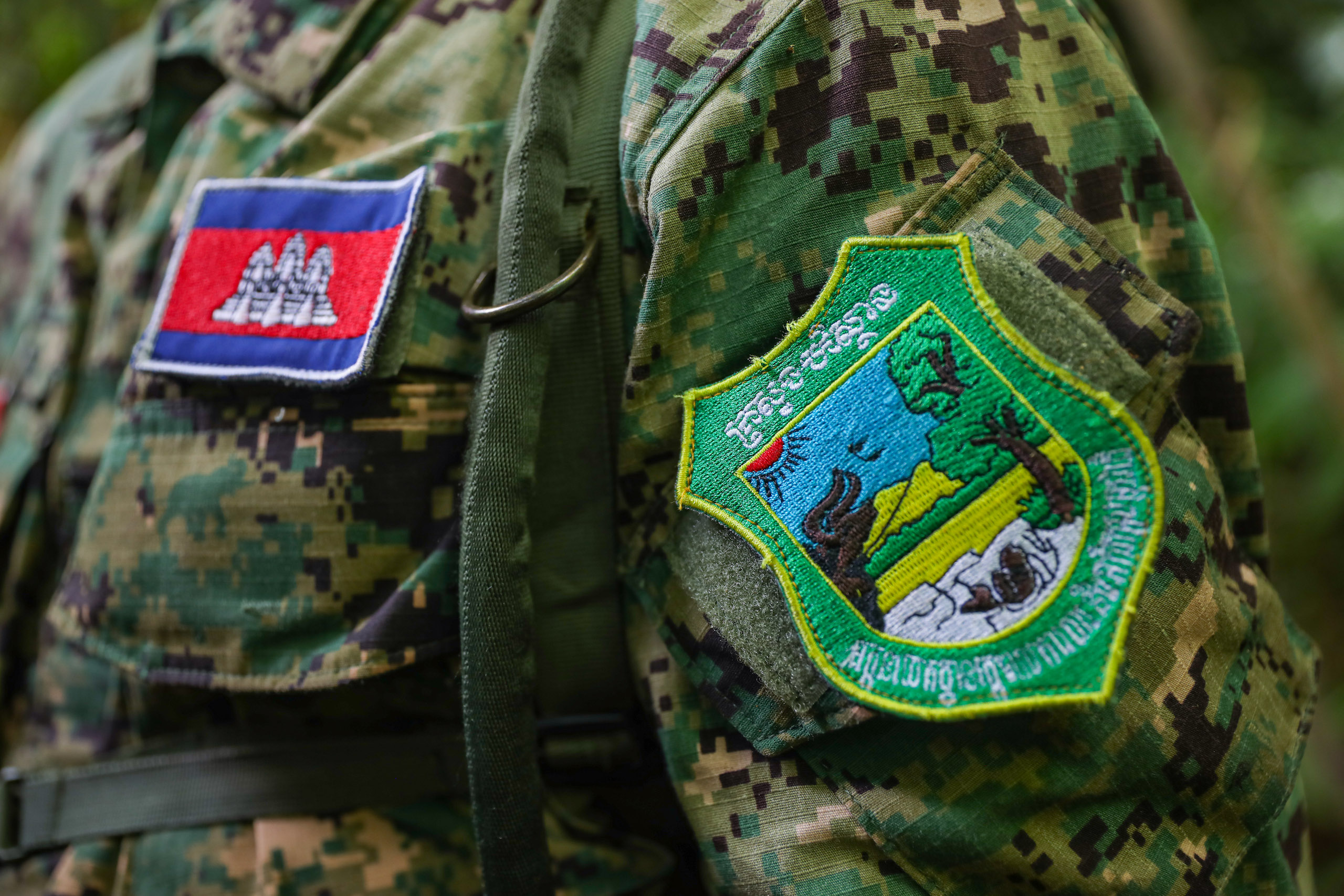
Snares are simple traps with a noose designed to snag the neck, torso or leg of any animal that walks through it. Often made with household items, like wire cables, nylon or rope, snares are cheap, easy to produce and simple to set in large quantities.

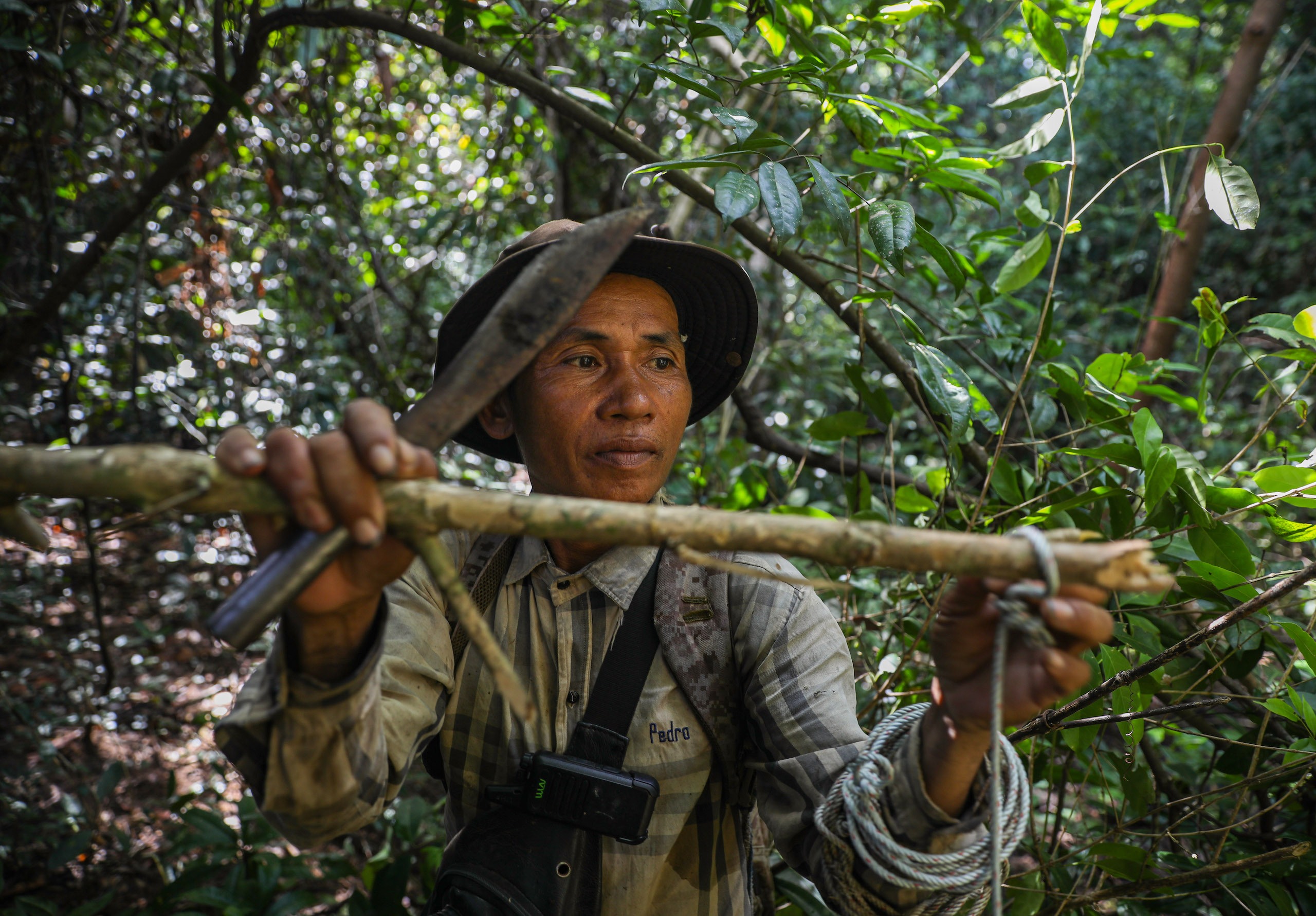
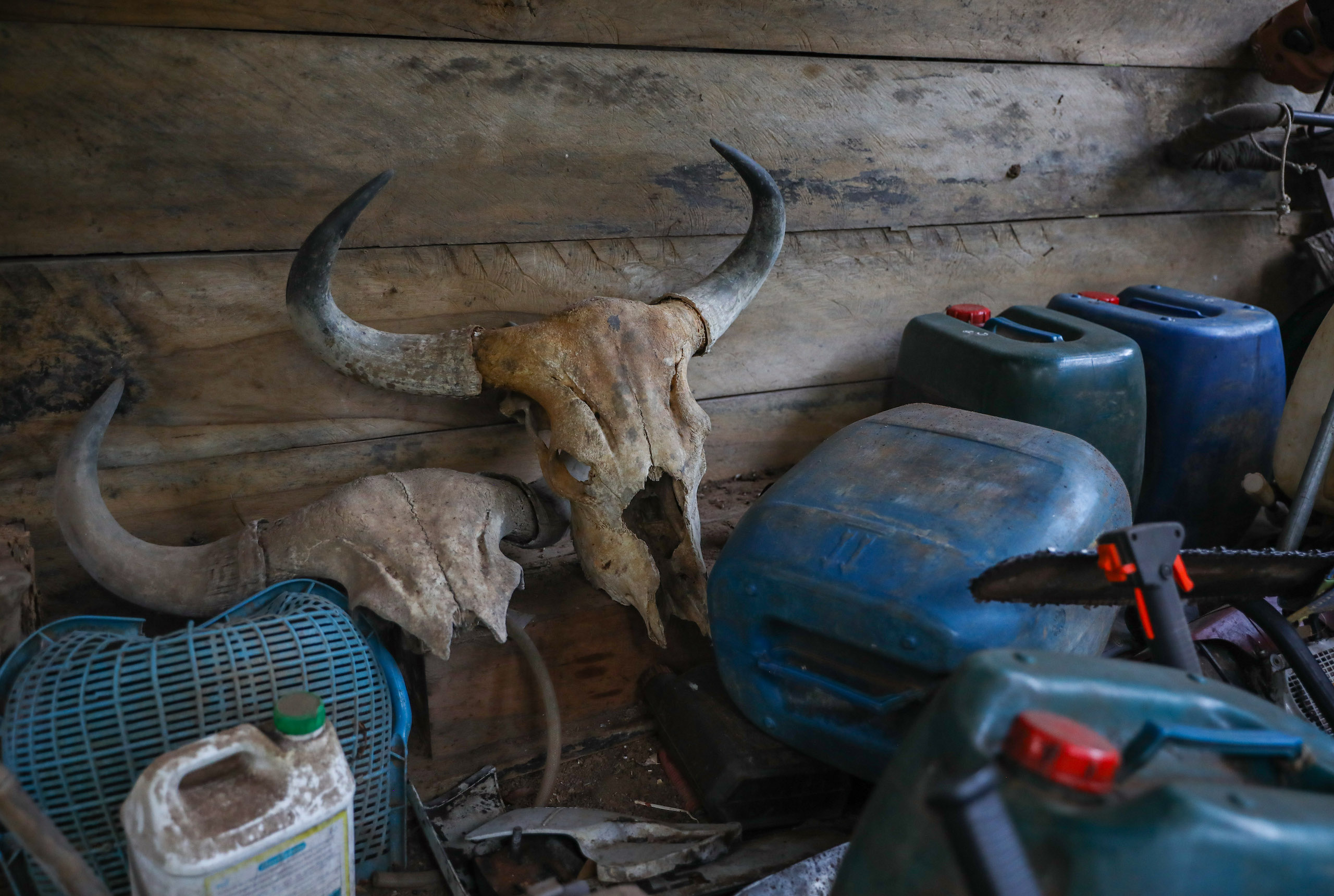
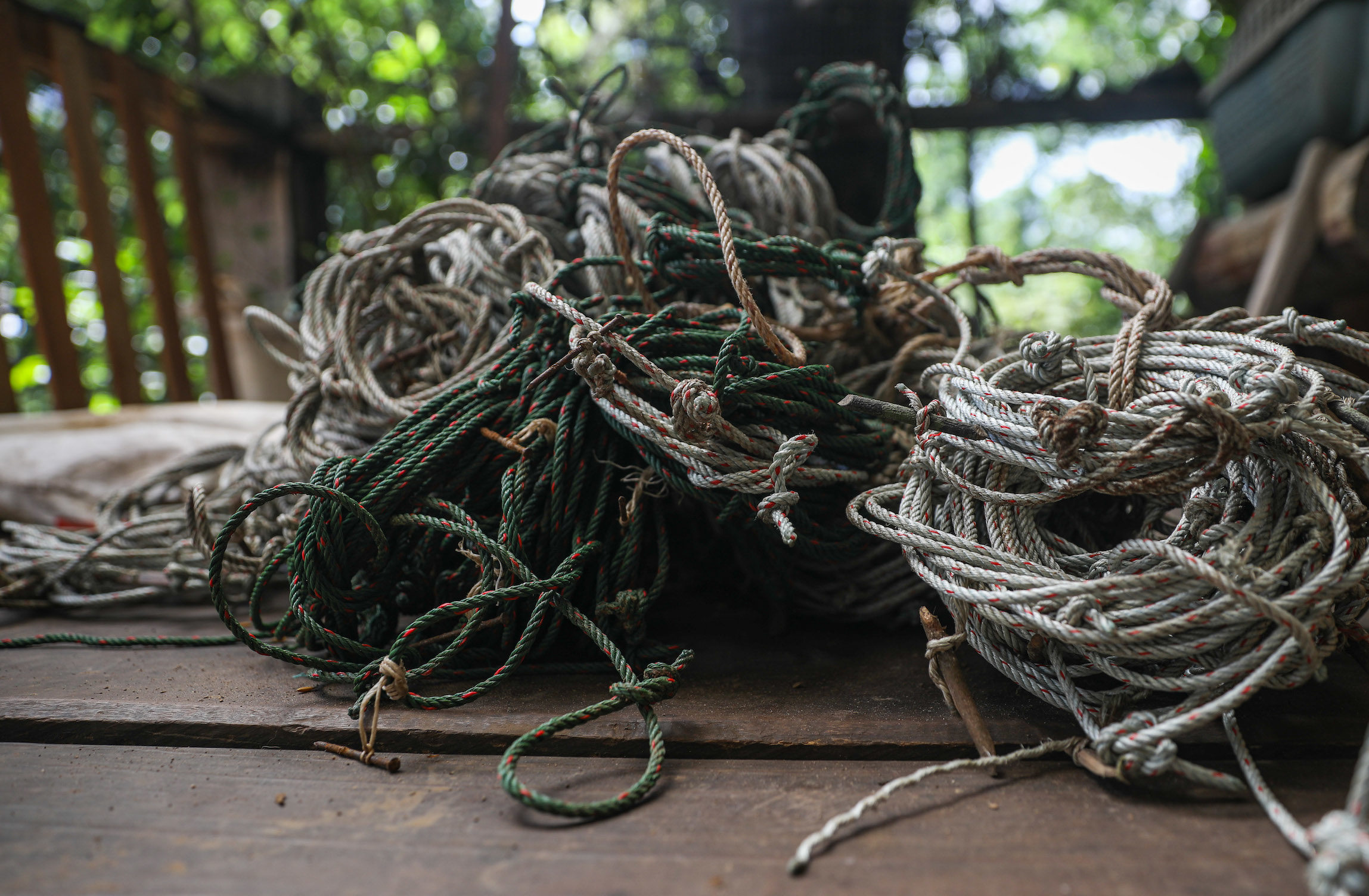
In a 2020 report, WWF estimated that 12.2 million snares were present in protected areas within Cambodia, Laos and Vietnam, equivalent to more than 110 snares per square kilometre.
The banteng, a type of wild cattle found in scattered populations from Myanmar to Bali, is among the most at-risk species, according to Thomas Gray, who co-authored the WWF report and has studied banteng populations in Cambodia.
Phnom Tnout-Phnom Pok Wildlife Sanctuary in Cambodia’s northern province of Preah Vihear – where many of the early 20th century kouprey expeditions took place – is home to a herd of a hundred or so banteng today. It is plagued by snaring.
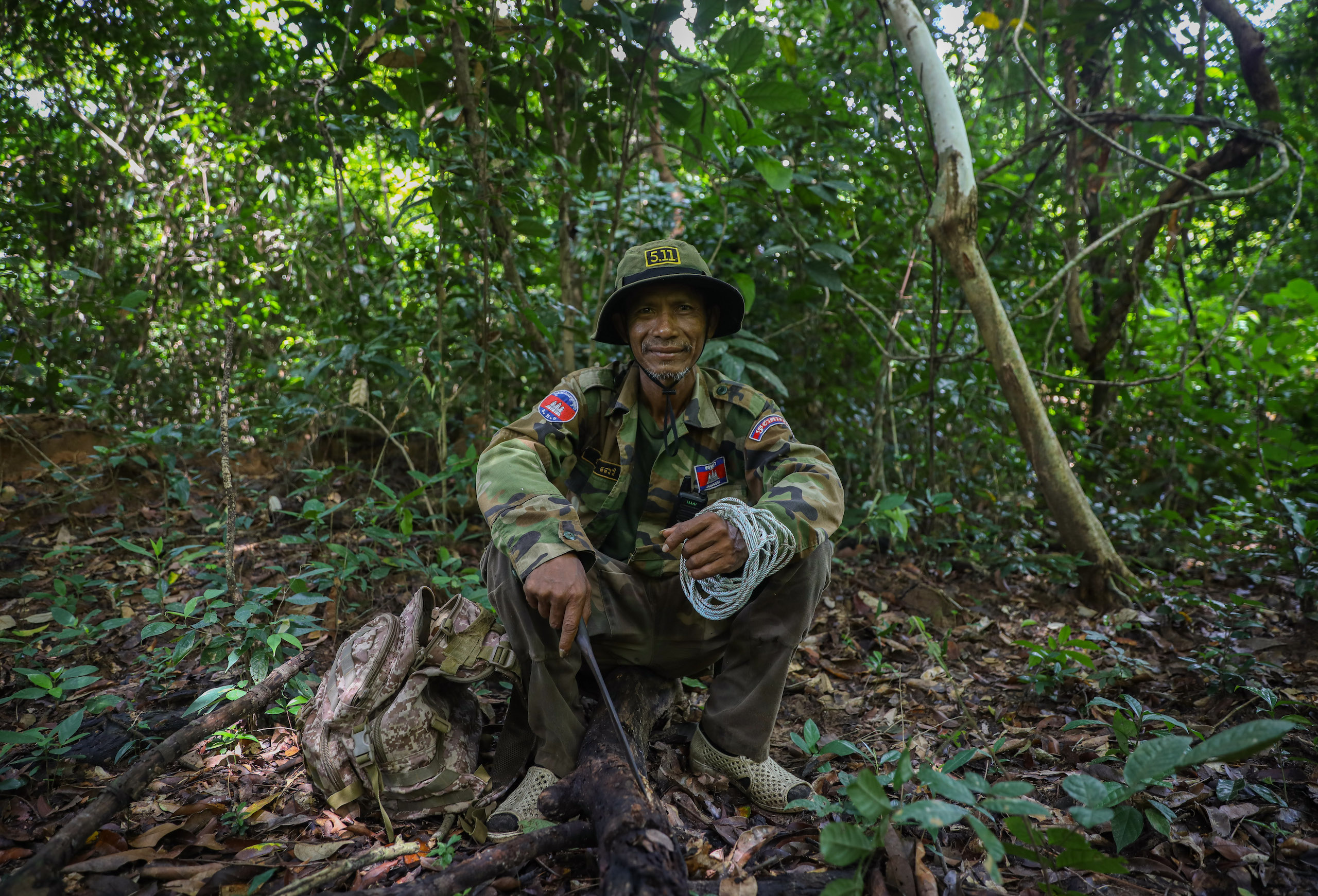
Community rangers, like Sok Lolo and Lim Sap, spend several days a week patrolling the protected area, looking for snares. Within the first two hours of a morning patrol in mid-July, the duo removed seven snares.
“As banteng continue to decline because of snaring, the probability of any kouprey remaining drops to zero,” says Gray.
The politics of extinction
The kouprey was declared a national heritage symbol in the 1960s by the king of Cambodia, making it the Kingdom’s national animal. In 2005, a royal decree narrowed the title to ‘national mammal’.
Despite an absence of confirmed sightings for more than half a century, the kouprey permeates Cambodian culture. The animal’s likeness appears on official stamps and company logos. ‘Kouprey’ has been used as a name for military exercises and is even the nickname of the country’s national football team.
The animal’s ubiquity as a Cambodian cultural symbol likely contributes to the government’s reluctance to determine its potential extinction, according to Robert Timmins, lead author of the IUCN assessment of the kouprey’s status.
“Extinction has a stigma to it. From a political perspective, admitting an extinction has occurred, particularly of a symbolic species, has political ramifications,” Timmins says. “Nobody likes to admit failure and it’s hard to see extinction as anything other than a failure in management and governance.”
The tale of the kouprey is a warning sign for biodiversityAndrew Tilker, Asian species officer at re:Wild
A declaration of extinction also takes time to coalesce. The IUCN declares a species extinct “when there is no reasonable doubt that the last individual has died” and “exhaustive surveys” have failed to record one. In the case of the kouprey, despite concluding that “its extinction, if not yet upon us, is almost certainly sealed”, the IUCN has not yet categorised the species as extinct on the basis that potential habitat was not “sufficiently surveyed to rule out the presence of kouprey.”
Would declaring the kouprey extinct have a meaningful impact on wildlife conservation in Cambodia? Gray, who is also the Red List assessment coordinator for IUCN’s Asian Wild Cattle Specialist Group, is doubtful.
“There is no urgency in declaring it extinct,” he says. “If kouprey, Cambodia’s national animal, was declared extinct would that change the behaviour of the government or people in any way? I don’t know. Might it concentrate the government? I think that is probably naive and too hopeful to say.”
Gray predicts that the next IUCN assessment for the kouprey – expected in the next one to two years – will continue to list the species as “critically endangered”.
But Tilker argues that the official extinction of a national animal could galvanise the government and conservationists to safeguard the region’s other dwindling wild cattle populations.
“The kouprey, whether there are no kouprey or five kouprey left, is a warning sign that all ground-dwelling endemic species in the region may be heading towards extinction,” Tilker says. “The tale of the kouprey is a warning sign for biodiversity, especially among wild cattle in Indochina. If the species were to be declared extinct, this could be a major wake-up call for banteng and other large mammals.”
This story was produced in collaboration with the Southeast Asia Globe.



